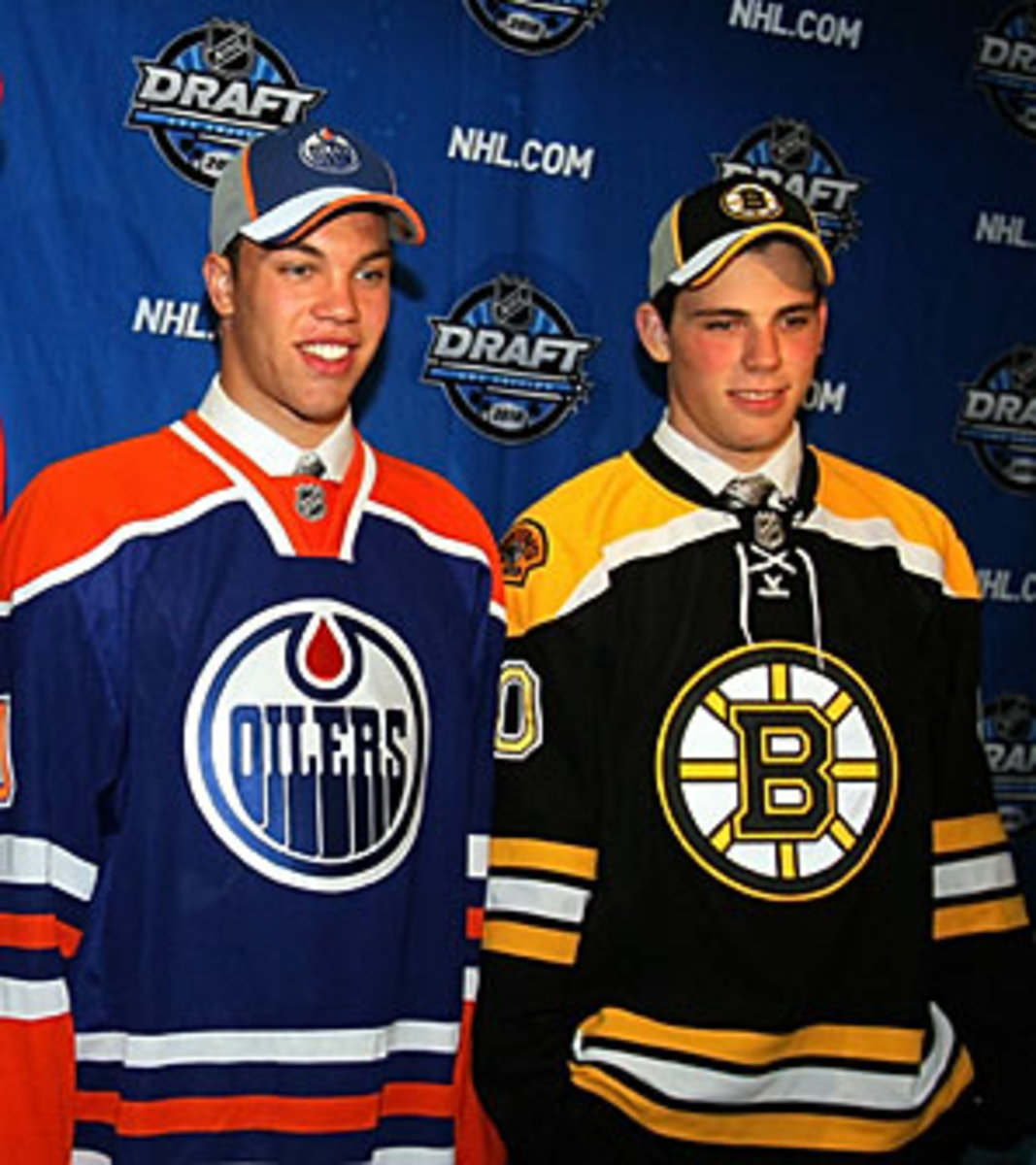Oilers and Bruins are a study in contrast as free agency approaches
In one short week, the NHL's focus moves from the positive side of projected futures to in-the-moment business realities of paydays for proven players. Whereas the draft is an exercise in hope, free agency is all about immediate help, and as is the case more often these days, those divergent themes run together for several teams, especially the two that picked at the top of the draft: the Oilers and Bruins.
In Edmonton, GM Steve Tambellini used the first pick in the draft to take the best player, Taylor Hall, who had dominated junior hockey in Canada as the leader of the two-time Memorial Cup winning Windsor Spitfires. Hall is central to the rebuilding that is underway for the Oilers. But Tambellini's dilemma is that the Oilers have been restructuring for several seasons already. Now he must assess which young players -- among them, Andrew Cogliano, Robert Nilsson, Marc Pouliot and Patrick O'Sullivan -- stay and which no longer fit
Even with Hall in the mix alongside Dustin Penner, Sam Gagner, Ales Hemsky, Jordan Eberle and Gilbert Brule, Tambellini's task is daunting. He has Tom Renney taking over behind the bench for Pat Quinn -- a move that Quinn is reportedly none too pleased about -- and his team is transitioning while in the midst of a previous transitional phase. Since missing out on the Stanley Cup in a gut-wrenching seven game series against Carolina in 2006, the Oilers have been unable to forge a plan for sustained viability. More accurately, the course they set has failed and they are in the midst of recalibrating. Hall is now the cornerstone of the renewed view in Edmonton, but he really is just a piece of a changing puzzle. In other words, the Oilers are the definition of a "work in progress."
While Tambellini is busy assessing how all of his young players might fit together, Bruins GM Peter Chiarelli is sitting in Boston scrutinizing his roster from a completely different perspective. He took Tyler Seguin with the second overall pick, courtesy of the Toronto Maple Leafs as part of the Phil Kessel deal last September. When Tambellini took winger Hall, leaving centerman Seguin for Chiarelli, it created a glut at that position in Boston. The Bruins already have Patrice Bergeron, David Krejci and Marc Savard in the pivot. Adding Seguin is a blessing, but again the business machinations grind on immediately. Sure, Seguin could move to the wing, but that is a temporary short-term solution.
Chiarelli is looking this week at the long-term -- just as he was when he signed Savard to his seven-year deal last summer. Under the terms of the contract, Savard will receive $7 million again next season, but is only a $4 million cap hit for the duration of the deal. Maybe Chiarelli can trade Savard while Seguin joins the B's and integrates slowly as a centerman. It certainly is more plausible now that Savard has acquiesced on his no trade clause, supposedly saying he'd okay a move to either Toronto or Ottawa. At the same time, Chiarelli is saddled with Tim Thomas and his $5 million per season pay as a backup goalie. There has been limited interest in Thomas, who lost his starting job fair and square to rookie Tuukka Rask this season.
Unlike Tambellini, who must assess a group of young players with short and spotty resumes, Chiarelli's business task is to adjust his roster due to the good fortune of having his young players become legitimate alternatives to proven veterans. In granting both Thomas and Savard lucrative long-term deals, Chiarelli paid them largely for services rendered. It was the right thing at the time. Now, the Bruins have a chance to move their business model forward with the emergence of Rask, the drafting of Seguin, and the acquisition of winger Nathan Horton from the Florida Panthers for defenseman Dennis Wideman.
No matter how it all plays out, Chiarelli and the Bruins are in a position of strength, even if they have to stand by the hefty contract of Savard and Thomas. After all, Seguin could go back to junior, giving the Bruins additional time to work on how best to address the veteran payout component of the equation. That's a world away from Tambellini in Edmonton where Hall will certainly play for the Oilers next season and there are no proven veteran contracts to contemplate, meaning there is no cushion of succession planning.
While we're contemplating, consider if Seguin had gone to the Oilers and Hall had fallen to the Bruins. The business case would've remained largely unchanged in Edmonton. In Boston, though, adding Hall on the wing -- along with Horton -- to the three-deep center ice position might have made Chiarelli's post-draft glow last a little longer. Instead, it is business as usual in the quick turnaround from draft to free agency.
Oh yeah, with the distinct possibility of trades in between.






